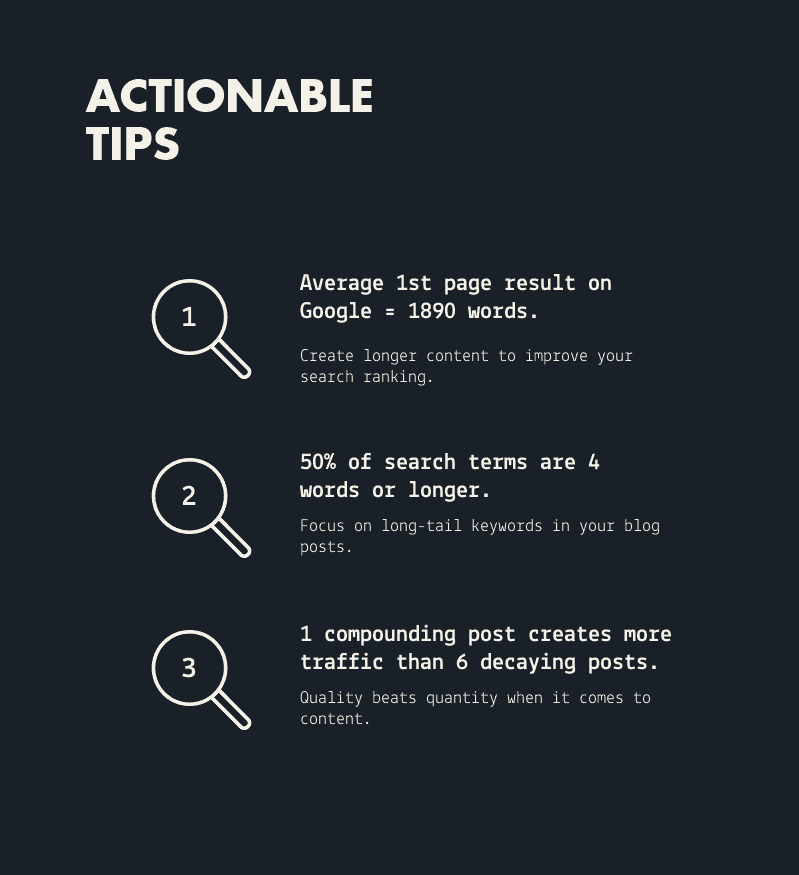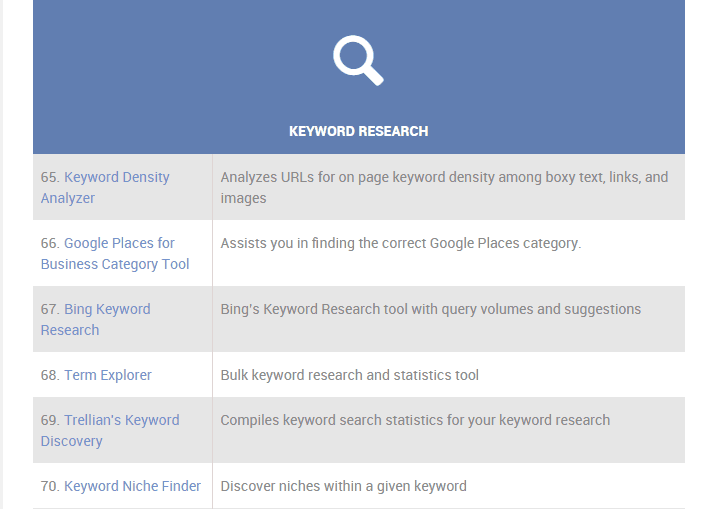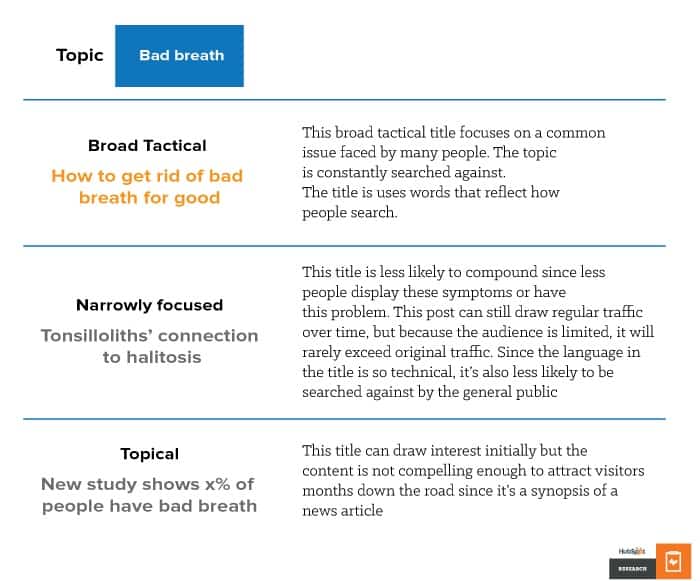This infographic tells a powerful story. 
Content marketing isn’t just one piece of the (complicated) SEO puzzle – it’s way more important than you may have previously thought!
See, the majority of web traffic still comes from organic search – more than paid campaigns, social media or any other channel.
So, SEO is clearly as significant as ever.
And what’s the most effective way to improve SEO?
Well, most marketers believe that content is the key.
They’re not wrong…
Take a look at the statistics:

Share this Image On Your Site
To reiterate the key points of the infographic:
1. SEO is vital as most web traffic comes from organic search.
2. Content marketing is the best way to improve SEO (and therefore get more traffic).
3. Key benefits of using content marketing for SEO are more indexed pages, more backlinks and stronger leads.
4. Finally, there are simple yet effective, data-driven strategies to optimise content for SEO.
Let’s take a closer look at those strategies…
Now you know that content marketing can help you perform better in the SERPs.
So it’s time for some actionable tips that you can use to upgrade your content.
Content Marketing Strategies for SEO

1. Create longer content to improve your search ranking
There continues to be much discussion as to the optimal length for blog posts.
But all we need is some good data to give us an idea of the ballpark figure.
After analysing one million Google search results Brian Dean and his team at Backlino found…
The average first page result on Google comprises 1890 words.
So for all of you who have been pumping out short, keyword-stuffed blog posts – you’re not doing it right!
Your content needs to have depth in order to please both your audience and the search engines.
Google doesn’t simply look for a certain keyword which appears a certain number of times in your content anymore.
The algorithm is much smarter than that.
It understands the context of an entire piece of content and looks for a variety of keywords related to the topic.
That way Google can produce most relevant search results for the user.
Plus, the fact that you’re publishing long-form content proves that you’re putting in the time and effort to make your site rich in information.
That can only reflect positively on the authority of your site.
Hence, longer, in-depth content is what Google wants from you.
I know it can be difficult to produce long-form content so I want to give you a couple of ideas…
Top Long-Form Content Ideas
Many successful blogs create intense listicles.
WebpageFX went all out and created a list of 250+ free SEO tools split into various categories like this…

It would be so easy for a brand to publish a post with four or five useful tools.
Instead WebpageFX created a great resource for their audience, which also has the depth and length the search engines like.
Another great way to create in-depth content would be to create a fully-fledged guide on an important topic within your niche.
Take a look at this ultimate guide from Starter Academy:

Look at all those social shares!!
This content is clearly well-designed and offers a lot of depth by covering the topic in its entirety.
2. Focus on long-tail keywords in your blog posts
In order to boost your ranking you need to start thinking about how people actually search for information online.
How do you search for information online?
Like many others, you probably type in longer, more specific search terms half the time or even questions.
It’s the difference between simply searching for something short like ‘web design’ and a longer search term like ‘web design tips for beginners’.
Considering the way people actually search for information IRL, it’s no surprise that…
50% of search terms are 4 words or longer.
This data shows that you should focus more on long-tail keywords (phrases and questions).
Another reason is that the keyword tool you’re using suggests the same short-tail keywords for you and your competitors.
So to get ahead of the competition you might want to focus on long-tail keywords instead.
How do you find long-tail keywords?
There are a couple of simple methods that really work.
You can start by looking at the ‘searches related to’ section on Google.
Type in your keyword e.g. ‘ice cream’ (it was the first thing that came into my head…) and at the bottom of the page you will see relevant long-tail keywords:

You have some better keywords to use for a blog post on, say, the best ice cream brands or the history of ice cream.
You could even go a step further and click on one of the related search results…

There are some ace long-tail keywords there for you to create a post such as ’27 Ice Cream Recipes with No Eggs’.
A further way to find long-tail keywords would be to peruse Quora, Reddit or forums for questions related to your industry.
For example, I typed ‘graphic design’ into Quora and here are a couple of the first questions that pop up:

It gives you an idea of the type of long-tail keywords people interested in your niche would search for.
In this case we have ‘why are companies changing their logos to flat design’ and ‘best examples of good design’.
This method has the added bonus of pointing you towards topics that your audience really want to know about.
3. Quality beats quantity when it comes to blog posts
We’ve already talked about increasing the length and depth of your content to improve SEO.
It will also serve you better to produce quality posts that have longevity.
Hubspot found that…
Over time 1 compounding blog post drives more traffic than 6 decaying posts.
A compounding post is one that drives traffic to your site increasingly over time, while a decaying post is one that drives a bunch of traffic initially then decays over time.
Posts that only get better over time are going to reflect much better on your site in terms of search authority.
How to Write Compounding Blog Posts
There are several factors you need to keep in mind when writing these kinds of posts.
You should provide your audience with broader tactical posts on evergreen topics, as opposed to narrow-focused or topical posts.
Hence, you’re looking for posts that will have a wide appeal for a long period of time, such as reviews, how to’s and ultimate guides, answers to key questions or ‘best of’ posts.
This chart has some excellent examples of what does and what doesn’t represent a compounding blog post:

It’s not the most attractive topic to look at but anyway…
As you can see, compounding posts cover topics that people search for regularly.
They’re also going to help grow your audience over time as they’re topics of general interest and are evergreen.
Summing Up
Content marketing and SEO are closely related.
Content drives SEO in so many ways and the statistics prove it.
You might have different reasons for wanting to improve your blog posts…
For instance, you might want to establish your company as experts in your field or you might want to provide more utility to your audience through your content.
But if you want to improve SEO specifically, there are some really simple yet effective content tactics you can employ.
When you do this you often provide more expertise and utility as a byproduct anyway, as in the aforementioned posts.
If you’re ready to take your content to the next level for SEO purposes or any other reason then get in touch.



